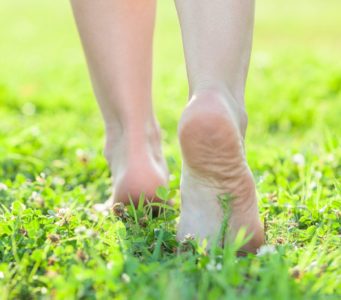 Heel pain is a pretty common issue for active children as they continue to grow. Sometimes it is caused by an acute injury or overstress during repeated activity, but other times heel pain can have a less obvious cause.
Heel pain is a pretty common issue for active children as they continue to grow. Sometimes it is caused by an acute injury or overstress during repeated activity, but other times heel pain can have a less obvious cause.
One of the more common causes of heel pain in growing children is what’s known as Sever’s disease. It probably sounds more serious than it actually is, but it still warrants observation and care from a foot specialist. Below, we take a closer look at how Sever’s disease causes heel pain in children, and how the condition is treated.
What Is Sever’s Disease?
Sever’s disease is a condition categorized by inflammation of the growth plates in a child’s heel. This inflammation can cause pain and discomfort along the open growth plate. Active children are more likely to irritate the growth plate, and sports like basketball, soccer and track are notorious for increasing discomfort caused by the condition.
Even though activity can increase discomfort, you should still encourage your child to remain active. Activity and exercise have whole body benefits for your growing child, and there are other ways to help limit discomfort.
Treatments For Sever’s Disease
Sever’s disease usually resolves on its own once the child’s growth plate closes, which usually happens around the age of 13 or 14. If your child is still a few years away from that point in their life, you’re going to want to help manage any discomfort with these mitigation techniques.
- Consult with a food specialist, as other issues like high arches or tight Achilles tendons may be contributing to pain.
- Reduce sport participation so it’s not a year-round activity.
- Ice the area after games or when pain develops.
- Buy shoes and athletic footwear that have extra support in the heel.
- Have your child participate in Achilles stretches or another physical therapy routine that focuses on improving structures in the foot and heel.
- Give your child anti-inflammatory medications and OTC pain relievers when necessary.
- Avoid high-heeled shoes.
Pain often resolves in 1-2 weeks with conservative care, but it can come back with activity, so try to stay ahead of the pain. Some foot specialists may recommend immobilization or casting to help take pressure off the foot, but only in more extreme cases where concentrated conservative care isn’t helping as much as the doctor had hoped.
So if your child is complaining of heel pain and they haven’t suffered an acute injury, consider having them examined for Sever’s disease. The more you know about the underlying condition, the better you can treat the problem and limit discomfort. For more information or to set up a consultation with Dr. Silverman, click here to reach out to his clinic.